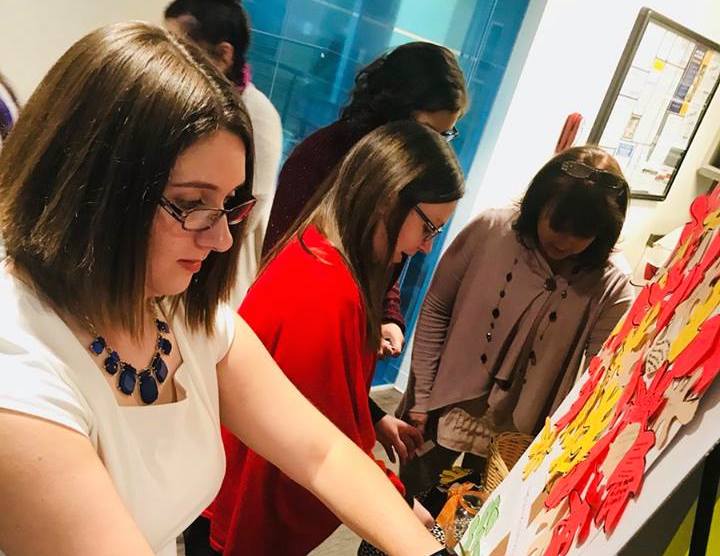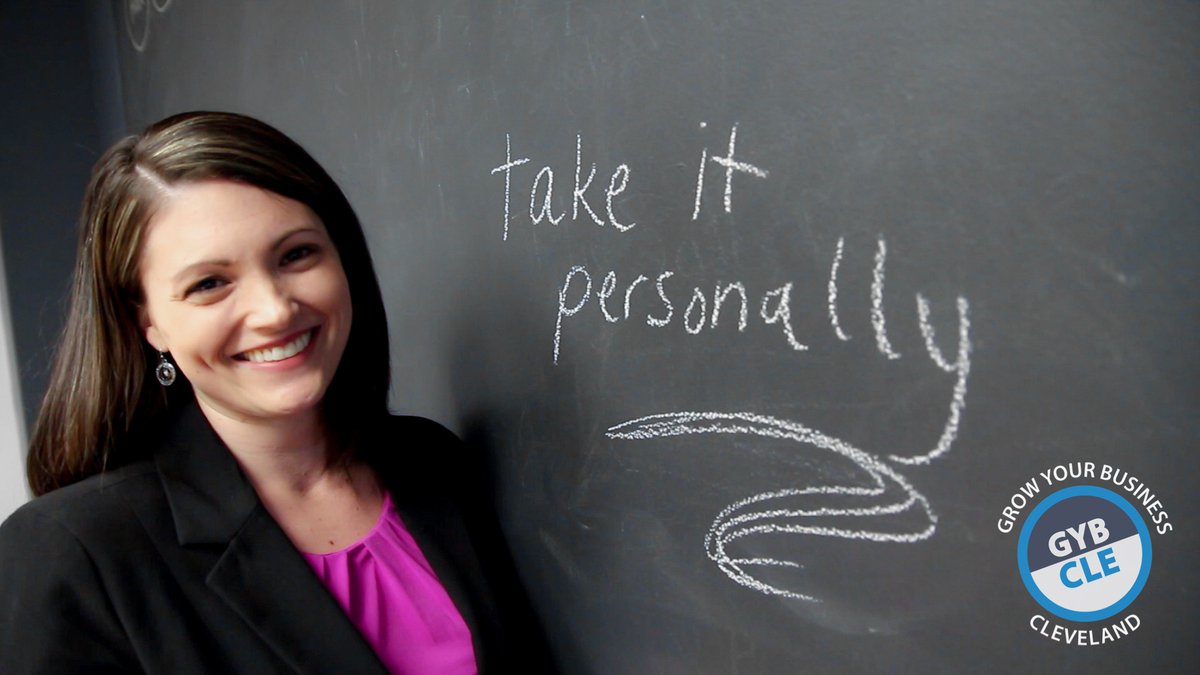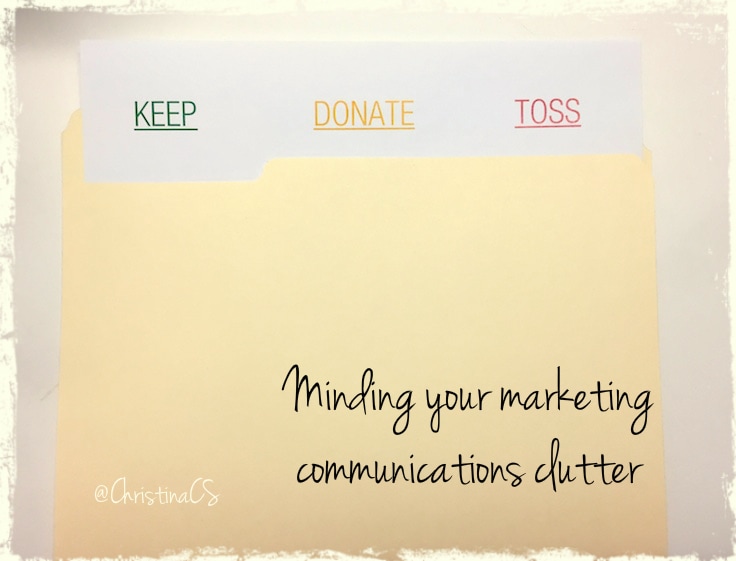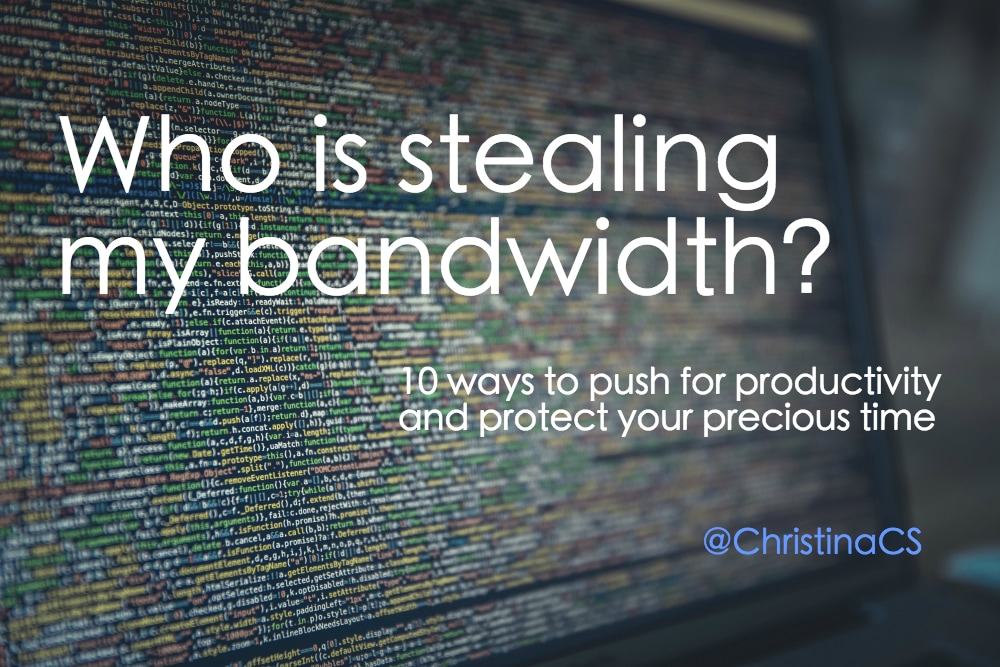|
Ownership. Responsibility. Accountability.
Are these words interchangeable? Can you have one without the other? Of the three, what do you value most? By the title of this post you can guess what I rank highest in importance. Ownership and responsibility, well, these are often shared, and as I’ve experienced, typically managed in a disproportionate fashion. Accountability? That’s all you. Answering to yourself and your obligations. A very personal matter, with large implications (especially when it’s lacking in an organization), and yet we don’t have to go it alone. Enter Accountability Partnerships I first heard about accountability partnerships in the professional sense from a group of successful women business owners in my network, clearly at the top of their games, but still seeking more. This group would meet regularly to update each other on the progress of their projects and goals, with the simple idea of choosing transparency over complacency. It is natural to want to hide in periods of failure. It can be the same in times of accomplishment. When things are going well it’s harder to address your weaknesses and testify to the areas in which you’d like to improve. There are times you’ll need a reason to stay on track and keep momentum. An excuse to avoid future excuses. That’s the idea of an accountability partner or group. It goes beyond mentorship or advising, by offering both guidance and encouragement, with the added bonus of a mutual commitment to upping your games and pushing farther. How much easier is it to exercise and eat right, say, if you have a special event or beach vacation on the horizon? Or to save money when there’s an actual some "thing" you are saving and working toward, not just general good practices. What if for your more everyday grinding needs, or long-term stretch goals, you had someone you knew would be holding you, pushing you, and with you each step. And someone who could also benefit from the same level of dedication from you, in their world. Making Your Match In the article, Forget Mentors, Find an Accountability Partner by Leigh Stringer on QuietRev.com, the following tips are recommended in landing an accountability partner: “1. Find someone you trust to be your accountability partner (a different personality from you is good, maybe better). 2. Talk to them about your goals. 3. Get specific with them about actions you will want to take to meet your goals as well as consequences/rewards for taking or not taking them. 4. Set up regular check-in times (this can be a text message, no need to meet every time). 5. Revisit goals and strategies every once in a while to make sure you are on track.” I would say that those pursuing an accountability partner already have some level of motivation inside — they want to get better. I’d recommend seeking to match similar intensities for maximum results. Remember, if you wanted a coach to be on your case day and night, you’d hire for that and expect nothing less. This is a partnership, meaning you’re in it together, and it’s important to have clarity around the expectations and desired outcomes. Building Better Partnerships Beyond keeping momentum during times of flow and growth, what about when you lose your way on your own and seek direction? I think accountability partners are here for that too. In my values and belief systems, I look up for navigation — look in for validation — and look around for inspiration. It is at these times when I truly hope that I’ve surrounded myself in the right company. Many say you’re the sum of to whom you spend the most time. Your personal and professional networks create your reality, and influence how you see yourself and react to your daily challenges. In the book “How Will You Measure Your Life?” by Clayton Christensen (and in his subsequent works), he talks about the concept of what “jobs” we hire products to do, and what we are “hired” to do and perform in the lives of others. In this concept, it’s not about what we want, but how we can home in on what is important to those we are seeking to nurture and strengthen, and then building our time and efforts around those things for more meaningful engagements and relationships. A strong accountability partnership or group will start on a basis of caring, and thrive on the promise of authenticity when it comes to feedback, guidance and redirection when needed. A close friend will comfort you in times of need. An accountability partner will make you uncomfortable as you rebuild your strength and achieve your next breakthrough. In the end we all want to simply be acknowledged. Don’t leave it to chance. Add an accountability partner to your mix of mentors, sponsors, and friends, and you’ll have someone who won’t let you forget your value...your successes are bound. Further reading: Why Accountability Partners Beat Mentors via Inc. Why an Accountability Buddy Is Your Secret Weapon for Faster Growth via Entrepreneur Image source: Unsplash.com
1 Comment
Volunteer your time. Make a donation. Attend a charity event. Serve on a nonprofit board. Share a cause on social media. There are numerous ways to give back to the community. What happens when your heart is in it, but your time, money, or resources in general, are in short supply? That's when it's time to get creative and take the lead in a different way. Discover ways to magnify your efforts to create meaningful engagements that resonate far beyond the end of the project or campaign. 1. Develop leadership skills (and those of others) Ever organized and led a campaign, drive, or "Day of Caring" for a group? Beyond contributing or showing up, stepping up to the plate and organizing the largest and smallest of details is a growth opportunity of the most rewarding variety. From coordinating with the benefactor and all parties involved, to recruiting and inspiring a team to help, and then drumming up the interest and support to execute on the plan. If leader is not in your technical job title, after the demonstration of your skills in this area, you will be seen in a leader in your own right, and for meaningful reasons. Regularly in this role? Purposefully find ways to let others take the lead and expand their skills and influence. 2. Create a halo effect with your networks and reach new audiences In a perfect world we would only engage and do business with those who share our value systems. With today's complex and blended ecosystem of partnerships, vendors and networks, there's not enough time to get too deep before opportunities pass us by. Focus on creating service opportunities that educate, involve or empower your extended networks to connect through the common ground of serving others. Don't be afraid to ask or propose partnership ideas with target groups, even if you feel yourself in a David and Goliath situation. It can also serve to attract the types of peoples and organizations to which future alignment and partnerships can thrive. 3. Capture and share the moments Be the one who serves to document and share experiences via photos, videos, interviews, blog posts, etc. This is not with the intention to "humblebrag," but to use a variety of media to shine light on the cause and gain attention. This is one way that you or your brand can use your permanent digital footprint to your advantage. Go deeper than the customary group photos of smiling service groups. Talk with the nonprofit leaders and grab quotes, key stats and inspiring thoughts to include with your posts. If you're interacting with clients and have permission, capture moments or conversations that will strike a chord. By bringing attention to your cause or work, you may also spark piggyback ideas that work specifically for the audience that engages with your content. 4. Create opportunities for yourself to lead, share and grow I recall this quote regularly when the task lists mount, the pressure rises, and time gets short. "The antidote to busyness is wholeheartedness." source You might not have the bandwidth to chair a major fundraising event or even take time out of your week. Everything matters - big and small - when it comes to helping others, and you create a sense of renewed energy in your life. Feed the ideas and opportunities that move you to become a stronger person and model for others, and you'll soon discover ways to share your passions through new paths and incredible people.
Thank you to the team at GYBCLE for the opportunity to share on one of my favorite topics. View the full video here and below and learn more about this unique program for emerging content creators at GYBCLE.com!
Agree or disagree?
If you agree, then what do you need “to be” to continue to advance in your influence and career? The answer is you need to be able to multiply yourself and your ambitions, beyond what you can pull off in the 24 hours you have to play with each day. I'm assuming that for most careers, you can't go it fully alone. You will rely on others to do their jobs, and do them well, to achieve what you want. You need more than an assistant, team or village. You need mechanisms that create opportunities to develop skills, and connect with and influence others. You also need to demonstrate consistencies in your messages and performances, and efficiencies with your time and the time you ask of others, to see the reflection of your discipline and hard work in the circles around you. Scaling Your Growth Branching out does not always mean moving up (at least not on the surface). With today's career landscape described more as a "lattice" than a "ladder," growing in depth and ability, including skill sets in areas like emotional intelligence, is paramount to advancement. As you know, opportunities don't always fall in your lap; you'll have to create them. The following are several mechanisms that create breeding grounds for growth opportunities, or better yet, put you in the position to shape your own experiences. SERVICE In addition to the difference you can make for people and communities, feeding the duty and drive to serve something bigger than us all can be a self-charging battery, and continual source of inspiration to others. From the spirit of your giving, to the follow through, and follow up, service to others gives purpose to each day and context to your own hardships: past, present and future. CREATIVITY It’s not an argument of art vs. science, or right brain/left brain. It’s about seeing people and situations through a different lens, and applying all you’ve picked up along the way to solve problems, discover new opportunities, produce memorable and measurable results, or simply sharing the creative thoughts that can spark others to also push further beyond convention. ADVANCEMENT Both in personal and professional development of oneself and others, through education, training, sponsorship and mentorship. Contribute to building and sustaining cultures of inclusiveness, collaboration and innovation, across diverse backgrounds and generations. Make a commitment to lifelong learning, and challenging yourself to take on new skills and environments (especially once you’re finally feeling confident and comfortable). LEADERSHIP No matter your stage of career or expertise, find and/or create your own opportunities to experience the demands of leadership, develop skills overtime based on these experiences and reinforce your model inside and outside of your typical daily duties. ENGAGEMENT Seek out participation with new people, organizations and networks in your community and industry, who are both like-minded with common goals, and push far beyond your comfort zone into new territories. Social media also offers tools to extend your message, reach and touches. In the digital world or real life: commit to showing up, even when you’re tired, over booked or under appreciated. Where to Start? In the future I’ll go deeper into these areas to show how they stand alone in your development, and also work together to create your personal brand and career story. To reframe the questions posed earlier…here’s a great place to start:
What are your key area, or mechanisms as I’ve called them, that contribute to your ability to achieve and surpass your professional/personal goals? Christina Capadona-Schmitz (@ChristinaCS & @DownWithSpitUp) leads marketing communications for Oswald Companies, a risk management and financial services company in Cleveland, Ohio. She is on the clock 24/7 with her parenting resource blog www.DownWithSpitUp.com, among other creative pursuits and community endeavors. Connect with her on LinkedIn at https://www.linkedin.com/in/christinacapadonaschmitz. Image credit Unsplash @ikarishinjigao The season of spring cleaning will soon be upon us. For at least 45 minutes I will muster some motivation, shuffling in and out of rooms, lamenting any cluttered areas, and maybe hastily shove some ghosts of fashion’s past into my donation bag.
But then I’ll have to check my phone. Or pop into email because I forgot to send that one thing that person needed. Because that is what modern business life calls for, and that is certainly part of the marketing communications gig. Whether you’re a small agency owner, a big-name CMO, an industry go-to expert or in your very first job, marketers are maddened creatures at this point, and I’d argue more than even a decade ago. Why? Too many options; must be artist, scientist, psychologist, journalist and data analyst at the same time; and oh yes, do this all precisely strategic, in real-time, while simultaneously driving sales, building the customer experience and advancing the corporate culture. And…influencers… I’ll never forget when an industry contact shared his secret fantasy of becoming a driver: “I’ll drop you off...I’ll pick you up...then I’ll go home.” Other more realistic daydreams take us straight to “IF” land…
When we respond to one IF, there’s another IFFER just waiting to take its place. Tackling TMI The stuff problem. Maybe I’ve watched too many reality shows, but we know that buying a bigger dwelling, or extra storage units, won’t solve problems. The root of the issues is that we are filling a void: a void made by fear. Same thing with marketing communications clutter:
There’s no way around it, so we have to go through it (as least until artificial intelligence takes over all of our jobs). Try this exercise in your next planning meeting, or when you simply hit a moment of too much. Keep (Crush) First ask, what is critical to advancing your organization, brand and people? Then what do you personally do that’s good, scary good? Look at the work week, month, quarter or other suitable time parameters of yourself or the team you manage. Wipe away the time suckers and administrative tasks you can’t avoid. Look at the actual quality production hours you’ll have each week, subtracting the meeting times and travel, and what not. What’s left, and how can you have the biggest impact on your team and business, by giving the best you have to give? Commit to it, rock it, love it! Donate (Outsource, Delegate, Automate) What remains critical and that you still have to do that doesn’t fall within your precious productivity blocks? Or what do you want or need to do, but don’t have the skill set or bandwidth to perform personally, nor the prioritization, budget or interest in hiring or training more bodies. The perpetual answer: why don’t you outsource? Well, effective outsourcing takes an A-player on the inside to drive the process, maximize the partnership, and overall dedicate the focused and productive time needed to see the results. I’ve been on both sides; I know this reality far too well. When you are considering what to move to the donate column, factor in:
Toss (or better put, Step Away, Shelve, Recycle) Major disclaimer here. Unless you have a strong case of saving money or driving sales/growth, if your company, boss, board will not let you throw something away, then go back to Keep or Donate. Maybe you’ve given your all to something — or someone — that simply hasn’t worked. Maybe the money or patience has run out on an endeavor. Maybe your gut is telling you to run and don’t look back. Something has to give. When a tactic, campaign or an entire service area is all kinds of wrong, it’s worth at least stepping away temporarily to gain fresh perspective before final decisions. You may find something worthy of recycling or repurposing. Shelving something is not the same as forgetting forever, and just like fashions, everything seems to come back around. Give yourself permission to step away to find out. What Will You Keep? A ridiculously and increasingly complex marketing communications ecosystem calls for a simple way to make sense, and make haste, not waste, with the time at our disposal. How do you help yourself and teams keep organized and prioritized? What will you hold dear, and what's up for discussion? Christina Capadona-Schmitz (@ChristinaCS & @DownWithSpitUp) leads marketing communications for Oswald Companies, a risk management and financial services company in Cleveland, Ohio. She is on the clock 24/7 with her parenting resource blog www.DownWithSpitUp.com, among other creative pursuits and community endeavors. Connect with her on LinkedIn at https://www.linkedin.com/in/christinacapadonaschmitz. Who is Stealing my Bandwidth? 10 Ways to Push for Productivity and Protect Your Precious Time1/7/2017
Without fail. Whether for real work or some serious Pinterest browsing, as soon as I fire up my home desktop, it happens.
Soon enough my load times start slowing, my clicking gets much more forceful, and my patience drops faster than my weakened wi-fi signal. "Who is stealing my bandwidth?" I howl as I blast out of the room, stepping on legos and tripping over a shoe and a dog at the same time. Now, looking past the screentime parenting guilt glaring back at me, and that I probably need to upgrade my Internet speed around here, it's an analogy to real life. Energy vs. Time vs. Motivation Even the most motivated people fight against finite energy and ability to accomplish all that’s needed and wanted, within a given timeframe. Not to mention the umpteen outside factors ready to zap your vibes. We say, "there’s not enough time." Sometimes the hours can be too much in a day when we spend our mental and physical energy too early. And, for us most fortunate out there, we waste our critical thinking juice on the not-so-vital stuff. Ex. trying to decide what to wear in the morning; or consuming, processing and reacting to the drama of others via social media. So what, or who, exactly are all these negative time and energy suckers? And why are they getting the best of you, while the important stuff gets the rest of you. Sometimes we need gently reminded, and sometimes we need forcefully nudged. This is a nudging. Here are 10 ways to push for more productivity, and protect your precious bandwidth in the process. 1. Draw Your Boundaries, and Defend Them Boundaries are about respect for yourself and others you care about. There are experts out there, and a series of bestselling books, so I won’t go into details other than to make them real and remind yourself often. It’s not enough to say NO more often unless you’re willing to hold your lines. Also, stop letting people pick your brain, and waste your time. Or in the least find an alternative (and more answers via FastCompany). And be respectful and cognizant of when you’re asking that of others. Mutually beneficial opportunities and symbiotic relationships reign supreme: if you’re willing to do your homework and think bigger than the urgent need at hand. Guess what else? Contrary to popular belief, sending an email about something you need, is not a transfer from your to-do list. You may think the ball is in their court, but if you aren’t an active player, that ball will drop quickly in priority. 2. Write it ALL Down Most swear by writing out their major goals to make them visible and get them done. I’ve tried this before and it worked against me because they were too broad, and felt like constant reminders of what I wanted, but without how to get it. What works for me is writing everything I need to do down, to the smallest of details, and even the automatic stuff I would do anyway in the course of the day. I do check in to the big picture goals and metrics regularly, but live daily in my own minutia. For some reason, it all becomes more manageable and feels like progressive achievements. It also helps me to find out where my time is being spent, and to "eat the frog," or get done and out the way the most difficult or dreaded of tasks first (horrible saying; good intention). 3. Rest/Fuel/Move Don't try to get enough sleep, eat right, and exercise. Those words sound exhausting in themselves. Make these concepts more relatable and realistic in your life by reframing the context. Rest because it will renew and refresh, to feel better, be a more effective person and collaborator, and make sound decisions. Fuel your body with food that boosts and sustains your energy levels. Move in a way that feels good for you and doesn’t leave you in a state of pain, exhaustion or dread for the next time. She in the CLE co-founder Amy Martin said it best in her post “How I Crushed 40!”: “I was going to move more. Notice I didn’t say diet — but move.” 4. Multiply Your Time Not to be confused with multitasking, I learned about the concept of multipliers in a leadership training class and try to use whenever I can. For example, like the last point, plan for family or friend bike rides to combine quality time with physical activity. Or get others involved in meal time preparations, or watch a movie together while you fold laundry. Pay your bills waiting for the doctor. Get creative. 5. Detach Remove yourself (occasionally or whenever you can) from all that's expected of you, including required responsibilities you've grown to loathe, and the dastardly grips of social media consumption. See more tips in this Influencive post, Treat Yourself to a Productivity Breakthrough with These Secrets from an Inc. 500 Entrepreneur by Brian D. Evans. 6. Attach To new experiences, people, etc. to break up the monotony of a schedule, challenge yourself to new ideas, and open your heart and mind to new relationships, no matter how big or small. 7. Serve Others There are those in your life who demand project updates, or juice boxes, or snuggle time: they will get that of you every day. I'm talking about service outside of the norm. Think about making an impact, even very small, on the life of another, with nothing expected in return. Consider this quote from an excerpt by poet David Whyte: “The antidote to exhaustion is wholeheartedness.” 8. Visit Your Happy Place If this makes you think of the movie Happy Gilmore, you’d be right. Can you think back to a time or experience when you felt authentic, free, joyful? Is there a way you can associate these feelings with your present day activities to lessen the blow, and put more energy behind tasks? I created an 80s/90s Nostalgia YouTube mix that never fails to perk me up. 9. Reflect I'm horrible at this. Read this awesome post by author Jocelyn K. Glei instead: Take a Load Off: The Missing Key to Productivity Is Reflection 10. Get Real For me, it's a reality that the more I want to do, achieve, and experience, well simply, I'm not getting more than the standard 24 hours per day to do it. I can wake up earlier than everyone else before the technology sneak attack, or I can be more thoughtful in how I look at each phase of the day, week, month or season in my life. I learned early, and gratefully, the concept of “one chair at a time.” I don’t remember the source, and can’t find the original article, however the concept has stuck with me. You have to be the best you, where you sit or stand, at that given moment. It helps you focus, perform and refresh for the next challenge ahead. What works for me might work for you, or possibly the complete opposite. Maybe you’ve been stretched beyond your earthly capacities and entering superhuman status — and I’d believe it. Perhaps it's time to borrow some capacity from others and ask for help, or when it's your turn, lend some of your own. We're not perfect, and won't get it all done. But we can become rather amazing in the process. Our bandwidths might be unreliable, but with your heart in the right place, the signals you send out to the world will be as strong as ever. image source: unsplash Christina Capadona-Schmitz (@ChristinaCS & @DownWithSpitUp) leads marketing communications for Oswald Companies, a risk management and financial services company in Cleveland, Ohio. She is on the clock 24/7 with her parenting resource blog www.DownWithSpitUp.com, among other creative pursuits and community endeavors. Connect with her on LinkedIn at https://www.linkedin.com/in/christinacapadonaschmitz.
One Sunday summer morning, as I caught up on work while my kids were coloring on the deck next to me, my five-year-old son runs up and says:
"Do you know we all have logos? Daddy's logo is a star and mommy's logo is a heart." Out of nowhere my son had developed a fascination with branding. Now considering my line of work, I swear this was unprompted, as on his own he began pointing out recognizable logos from restaurants and shopping chains on car rides, and identifying symbols for characters on his favorite TV shows and movies. Of course I probed on, “Why do you say that? “Daddy's a police officer and the star represents that…” “Well, what about the heart?” “Ahhh, you’re a heart because you love me!” he said with a laugh. Say and think what you will about the sometimes trite, and often over-used, term "personal branding," but it does exist, and in the smallest of world perspectives. Although we're highly exposed daily, our self awareness isn't always in tune. Sometimes we need an unfiltered view to understand what values we are expressing to those around us. To me, his expression of the heart to represent me spoke volumes, as I sat there typing away on my laptop, feeling the constant strain of supporting my family, my work, my personal development. On the whole; it was the heart he saw. He continued... “My brother’s logo is all different and wild colors,” as he ran over to our three-year-old who was jumping and yelling on the jungle gym. Later, he scribbled the colors he saw of this free spirited soul to whom provides much adventure daily to his life. (pictured above). The big question remained. “So, what about your logo?” He paused. Then matter-of-factly stated, “My logo is a smiley face and a mad face with two arrows going back and forth between them,” then ran back off to play with his brother on the jungle gym. I guess big feelings start early, run deep, and don’t end once we outgrow childhood. The emotional struggles we have within ourselves, and the connections we have to each other, explained through simpler means, can help bring a little order to chaos. If even the most naive of eyes can notice, how do you think the wiser eyes see you: your clients, your prospects, your employees? What marks do they see that represent you, your work, your associations to ideas, interests and organizations. As modern communicators we're told to choose visuals over words, especially for web-based consumption by impatient consumers. But it's the context, the stories, the expressions, the experiences that give life to the graphic representations. Word and design marks only offer consistency in the surface look; it’s the everyday behaviors and experiences that make a brand what it is, be it product, service or personal. Want to know your personal brand, and the authentic you to share with the world and stand out? Just ask yourself how a child would "brand you.” Or better yet, find a five year old (with an early penchant for marketing communications at that) and ask them yourself. Christina Capadona-Schmitz (@ChristinaCS & @DownWithSpitUp) leads marketing communications for Oswald Companies, a risk management and financial services company in Cleveland, Ohio. She is on the clock 24/7 with her parenting resource blog www.DownWithSpitUp.com, among other creative pursuits and community endeavors. Connect with her on LinkedIn at https://www.linkedin.com/in/christinacapadonaschmitz. Everybody and their brother is on LinkedIn. Even my brother.
But being ‘’on” doesn’t mean being “one” with the platform. Until you take the leap and dive in, it is, and will remain, a platform. This post isn’t a how to use and navigate LinkedIn (see my overuse of the word guru later in the post) or maximizing its paid solutions in sales, careers and marketing. It covers why it will be worth your time in figuring it out: for yourself and the audiences that count on you. 1. Build Networks With New Generations of Engaged Professionals In addition to building fresh and stronger connections with your current networks (yes, they are on LinkedIn too), start to think bigger and toward the future. Your next best talent might show up at your doorstep, OR you might stumble upon them during your time logged on. Or better yet, you might take a strategic approach to searching and finding new connections. Spoiler: you know the well-connected, digitally savvy, motivated professionals you dream about joining your organization? Well, they are right here, putting it all out there for you to see. 2. Thought Leadership? Do it All The Time You haven’t reached your level of influence by standing on the sidelines. LinkedIn puts, at your fingertips, the power of sharing your experiences, your vision, and your kudos to other leaders in your circles and beyond. This isn’t about trade secrets and secret sauces. It's about sharing the lessons you’ve gained, and subject matter authority you yield, on a much broader playing field. Whether you choose to publish your own articles, "like" or share valuable content from others, or simply consume resources as they emerge on your feed, you won’t be able to help yourself but to feel more engaged and enlightened to the pulse of your constituents. 3. All Eyes On You If you want a more digitally engaged workforce – from entry-level, to sales, to upper management – what better way than to set the tone yourself. Others will surely follow if you start to make it a habit. It’s probably a good time to state that LinkedIn is not a priority task you can simply work into your calendar; it’s a disciplined behavior that must be practiced and nurtured on- and off-the-clock. The tools may change, but the “social media” way of communication is not going away, so there’s little risk of wasting the time you invest now to understand the landscape. Talk it up, offer learning opportunities for employees, and share away. Bonus: A Guru is Going to Get Ya Somewhere, someday, some self-proclaimed social media guru is going to corner you for five minutes and challenge you to “go digital.” And you’re going to be able to say, been there, done that, what else do you have for me? Or in the least, be able to share that you’re on it, and working toward maximizing the tool, calling on technical or moral support when needed. Get Comfortable with The Caveats As you’ve learned during your tenure, there’s no such thing as a free lunch. Fortunately, the challenges posed are the same that you deal with in real life.
With all the best practices out there – be it profile update tips, engagement activities, or making the most of connections – the only successful LinkedIn strategy is the one that will keep you logging in each day. When getting started, or getting active, don’t start with concerns on how your picture or profile should look, or who you should connect with, or what articles to share; rather ask yourself:
Keep in mind: your competitors are already on here. Look them up in the search function if you don't believe me. So come on chief(s), it’s time to warm up to the idea, download the app, and dig in. ***** Clearly, you don’t have to have a corner office to benefit from these lessons. For more on the how-to, check out the resources below or schedule time with the most engaged professionals in your organization to find out how they make it work for them. • Getting Started on LinkedIn (video) • Moz Beginner's Guide to Social Media & LinkedIn Christina Capadona-Schmitz (@ChristinaCS & @DownWithSpitUp) leads marketing communications for Oswald Companies, a risk management and financial services company in Cleveland, Ohio. She is on the clock 24/7 with her parenting resource blog www.DownWithSpitUp.com, among other creative pursuits and community endeavors. Connect with her on LinkedIn at https://www.linkedin.com/in/christinacapadonaschmitz. Do you subscribe to the mantra below?
Be yourself. Those who matter don’t mind; and those who mind, don’t matter. There are several versions of this quote, but the core idea is the same: the important people in your life will know your value. What about in business? Do the same rules apply? Not bound by blood or friendship, those who matter, might mind: your board, your boss, your clients and your teams. Or will they? Some of us never get the chance to find out. If fears of failure, or looking foolish, are holding you back from:
Note: If you’re the kind of co-worker that sends emails in ALL CAPS, or leaves their dirty dishes in the sink for days (among other office faux pas), this post might not be for you. Might want to start with an office etiquette article. Breaking Through Barriers (and Buzzwords) If there’s one constant I’ve found in business is the propensity toward the “bright and shiny.” Always hungry for answers to simplify our lives, or enhance our situation, we are drawn to new ideas, advice, and movements, driven by thought leaders with interesting stories to tell. The current environment is no different. More recent and popular enterprises in personal disruption, professional presence, and authenticity and emotional intelligence, are different in nature, but share similar threads: removing barriers (both internal and external) and overcoming risks to achieve fulfillment in your personal life and career. For a deeper dive into these movements, click to view the full PDF download "Taking Risks On The Real You: Three Ways to Erupt Yourself and Your Career," or read on below. Embrace Career Disruption Admittedly, before one can erupt their power inside, they must disrupt the whole world around them. That is what Whitney Johnson, acclaimed author and president/cofounder of Rose Park Advisors’ Disruptive Innovation Fund, shares in her recent book, “Disrupt Yourself: Putting the Power of Disruptive Innovation to Work.” In her LinkedIn Big Ideas 2016 article on this topic, she explains “when you disrupt, you move along something called an S-curve — the necessary pivots in our own career path,” through stages of competence, confidence and mastery. Each phase involves the risks of taking on new challenges and sustaining success over time. In the Quartz article “To get ahead in your career, disrupt yourself first,” Ming Hsu, assistant professor at Berkeley’s Haas School of Business and Helen Wills Neuroscience Institute is quoted: “People are often poor judges of the amount of risk, and can be swayed by surface elements, such as ambiguity.” Opportunities that seem high-risk on the surface, such as leading the implementation of a new corporate process, or taking on a role or task outside of your knowledge and experience, can yield the highest rewards and with low competition from outside forces. In these scenarios, your main adversary is yourself, including past experiences and implied anxieties. Even if you fail at the specific project, these types of initiatives force you to learn skills, absorb knowledge, and challenge yourself and others, in ways you haven’t done before. This experience will stick with you in the long-term, no matter your initial outcome. Project Professional Presence This is known by several aliases: the “X” factor; executive presence; personal branding. I prefer the French phrase “je ne sais quoi,” or “a quality that cannot be described or named easily,” since that is exactly how I feel when I’m in the presence, of someone with presence. In a recent post on professional presence How Will Others See You in 2016 and Beyond?, Oswald Companies senior vice president and Women’s Leadership co-chair Catherine Kosin shares “building professional presence is an all-inclusive reflection of yourself and requires effort and time to develop.” In other words, presence is a very external thing, bound to a wholly internal drive. It’s not something you’re necessarily born with, but something that you must nurture each day. It’s the value you give of yourself through your personal interactions, and example you set for others, despite the risks of revealing the real you. I define presence as the direct result of the work you put in when no one is looking, when someone is actually looking. Still apprehensive? Here’s a bonus: you can make biology work on your side. View the highly acclaimed Amy Cuddy TED Talk Your body language shapes who you are and join the millions who’ve made peace with “faking it” until you’re making it. Build Emotional Intelligence & Authenticity According to the Wikipedia definition, Emotional intelligence (EI) or emotional quotient (EQ) is the capacity of individuals to recognize their own, and other people’s emotions to discriminate between different feelings and label them appropriately, and to use emotional information to guide thinking and behavior. The idea was made mainstream by Daniel Goleman in the mid-1990s with his best-selling book Emotional Intelligence. The awareness component of EI/EQ is key. It’s not about being overly emotional in work settings, but it is about being appropriately emotional when the situation calls for it. It’s in your thoughts AND your actions. For example, we might be conditioned to check our emotions at the lobby elevator and run our teams like well-oiled machines. There are major risks in showcasing our feelings: major blow-ups, showing signs of “weakness,” etc. However, EQ is about the right balance of interpersonal connection to the humans we work with, and using intelligence to prevent lines from being crossed. This balance is delicate, but through awareness and practice, your perspective can change. In my experiences, an output of strong emotional intelligence is authentic collaboration and leadership. It’s the stepping stone to gain deeper trust for and from others; the precursors to getting your thoughts heard, and movements, well, moving. Taking The Right Risks: Mind Over Matter There are risks in revealing the real you: to yourself, your peers and your superiors. It’s going to take new visionary mindset to see beyond the present circumstances in front of you. You may find out there is much more work to be done before your ready to take the big leap. Or you might pull a Steve Harvey (no, not the famous flub), and simply jump. If you mind, it will matter. Wake up every day ready to take on new challenges, and act and communicate purposefully toward achieving your goals. Align yourself with the people, networks and organizations that embrace the values that you hold dear, and be the role model for others still finding their way. Fight the fears of changing your situation when it’s called for: a comfort zone isn’t all that comforting in today’s volatile, fast-paced business environment. As we say often at our organization - which is built on identifying, reducing, managing and transferring the risks of businesses and individuals - one of the biggest risks out there is standing still, and doing nothing. Long, long, story short. If you don’t disrupt yourself (or as I’ve described, erupt the real you inside) someone else out there is, and will be right on your heels. There’s room for all of us to advance, and frankly, a successful future depends on it. If I can leave you with one closing thought, it’s this: engage. Attend a professional event. Join a committee. Take a co-worker that you don’t know out to lunch. Make the choice to take an active role in the world and people around you. When you do, you’ll find that things like career disruption, professional presence and emotional intelligence, well, they’re just part of the gig. ***** Still need inspiration? Check out this impressive collection of quotes from women leaders. https://www.resourcefulmanager.com/quotes-from-inspiring-women-leaders/ Click to view a downloadable, print-ready version of this article. Christina Capadona-Schmitz (@ChristinaCS & @DownWithSpitUp) leads marketing communications for Oswald Companies, a risk management and financial services company in Cleveland, Ohio. She is a member of the Oswald Women’s Leadership Council. Learn more at https://www.oswaldcompanies.com/about-us/womens-leadership-council/. She is on the clock 24/7 with her parenting resource blog www.DownWithSpitUp.com, among other creative pursuits and community endeavors. Connect with her on LinkedIn at https://www.linkedin.com/in/christinacapadonaschmitz. |
Content Categories
All
About Me |









 RSS Feed
RSS Feed
